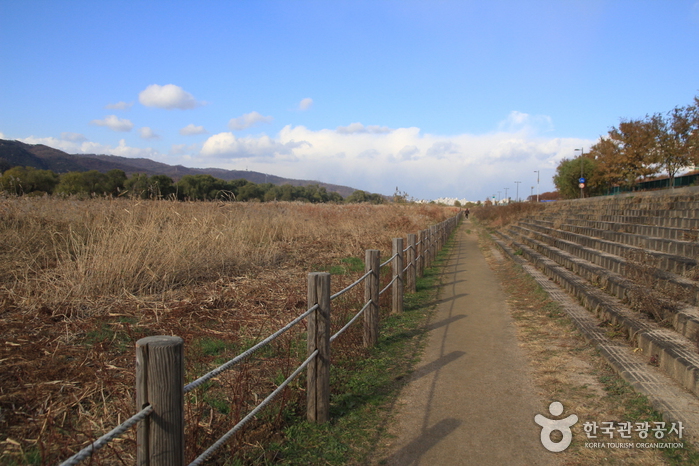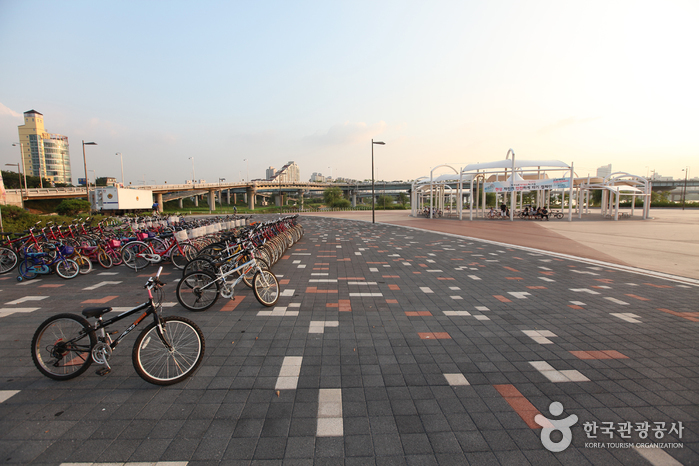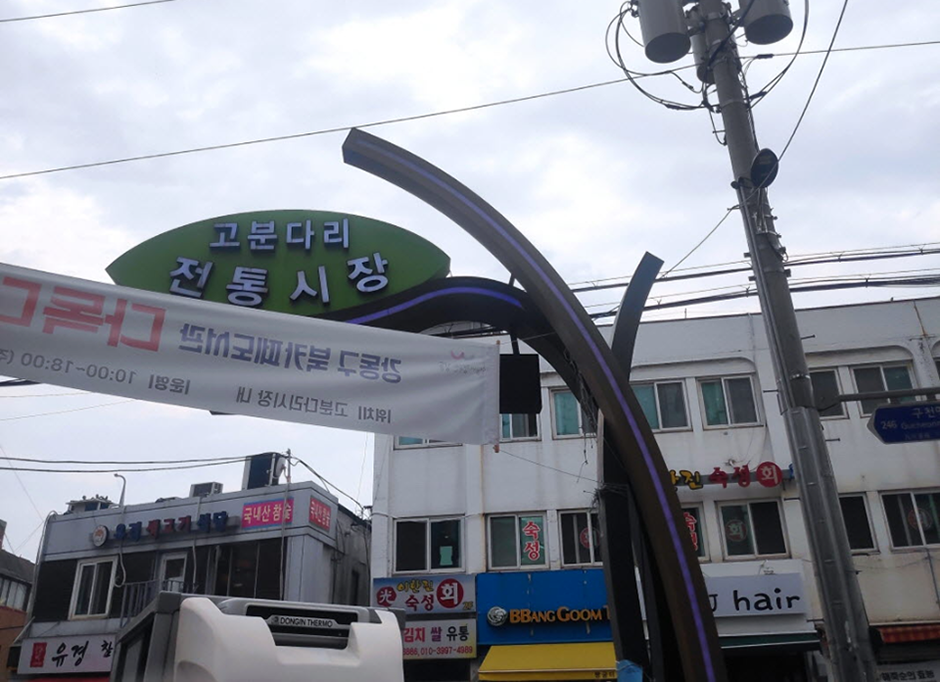Jirisan Wangjaebong Heukdwaeji(지리산왕재봉흑돼지)
0m 204 2021-04-13
26, Sangam-ro, Gangdong-gu, Seoul
+82-2-3426-5120
You can enjoy grilled Heukddoeji (black pork) with a variety of kimchi in soybean powder seasoning. This restaurant's signature menu is grilled black pork. This Korean dishes restaurant is located in Gangdong-gu, Seoul.
Gwangnaru Hangang Park Outdoor Swimming Pool (한강시민공원 광나루수영장(실외))
358.23737011417677m 12605 2019-07-30
83-66, Seonsa-ro, Gangdong-gu, Seoul
+82-2-470-9561
Six of the city's Hangang Parks have outdoor swimming pools, including Gwangnaru Hangang Park. Supported by meticulous water quality management, they are not only safe, but also an inexpensive alternative to private facilities. Excellent amenities include swimming equipment rentals, food, and beverages.
Amsa Ecological Park (암사생태공원)
371.87246581685633m 10817 2017-01-12
83-66, Seonsa-ro, Gangdong-gu, Seoul
+82-2-3780-0501
Amsa Ecological Park (located in Amsa-dong) is a large scenic park with long winding trails passing by reeds and other beautiful plants of the Han River. It is here as well that visitors can watch the flight of Korea’s migratory birds. The Ecological Park is famous for its beautiful scenery and its lush groves of reeds and pussy willows growing alongside the natural riverside road. Wild roses, loosestrifes, and tiger lilies are in bloom from spring to fall and the observation deck gives visitors a beautiful view of Han River and the area’s wide variety of birds such as reed warblers, titmice, and swallows. The river basin and its surrounding stones are a great place to learn about nature and are home to various bugs such as beetles, river mayflies, big scarlet hairstreak butterflies, and other water insects.
The Amsa Ecological Park is located nearby Godeok River Side Ecological Park and the Bicycle Theme Park, making this particular area one of the most popular tourist attractions along the Han River.
Gwangnaru Hangang Park (광나루한강공원)
374.84294206044143m 21908 2021-12-25
83-66, Seonsa-ro, Gangdong-gu, Seoul
+82-2-3780-0501
Hangang Citizen's Park, composed of 12 areas including Jamsil, Ttukseom and Jamwon, is an eco-friendly park providing areas for sports and leisure. The park is equipped with various cultural and recreational facilities and also has an ecological park. Gwangnaru Hangang Park formed naturally through rich silt that flowed in from the upper Hangang River that was then filled with reeds, creating an ideal habitat for groups of migratory birds.
Cheonho Park (천호공원)
641.6362043526605m 10284 2020-03-18
702, Olympic-ro, Gangdong-gu, Seoul
+82-2-489-2776
Located in Cheonho-dong, Cheonho Park is comprised of a musical fountain, an outdoor stage, and various sports facilities, making it the perfect spot for rest and leisure.
Gobundari Market (고분다리 전통시장)
1.0 Km 1 2023-12-22
8 Gucheonmyeon-ro 34-gil, Gangdong-gu, Seoul
Gobundari Market is a traditional market that takes care of food, clothing, and shelter for residents in Cheonho-dong. Because it is located in the center of the neighborhood, it is also a market where one can get a closer look into the daily lives of locals. One characteristic that stands out from this traditional market is none other than the murals. Murals of various themes that decorate the market area add eclectic energy to the quaint neighborhood. Like any other traditional markets, there are stores where visitors can purchase Koreans’ all-time favorite snacks.
Songwol Naengmyeon (송월냉면)
1.0 Km 0 2023-12-22
26 Gucheonmyeon-ro 29-gil, Gangdong-gu, Seoul
Songwol Naengmyeon is a cold noodle restaurant passed down for two generations, from 1988 to the present. It is a restaurant specializing in naengmyeon, or cold buckwheat noodles. It has three simple menu items: yeolmu naengmyeon (cold buckwheat noodles with young summer radish kimchi), mul naengmyeon (cold buckwheat noodles), and bibim naengmyeon (spicy buckwheat noodles). Yeolmu is the stem of young radish and is used as an ingredient in kimchi, one of the traditional Korean fermented foods, as well as salads, naengmyeon, and bibimbap. Harvest usually begins in early summer, so it can often be found on dinner tables in the summer. The combination of naengmyeon with ice, young radish, and cool dongchimi (radish water kimchi) creates a wholesome and refreshing taste. This restaurant is also popular among locals and visitors may have to wait in line during peak hours, but manages their table turnover in an organized fashion so their customers in queue won’t have to wait for too long.
Amsa-dong Prehistoric Site Museum (암사동선사유적박물관)
1.2 Km 26073 2023-12-22
875 Olympic-ro, Gangdong-gu, Seoul
The archaeological sites in Amsa-dong, Seoul, were a collective settlement where people lived during the Neolithic Age about 6,000 years ago and became known to the world after the sand dunes along the Hangang River caved in during the great flood of 1925, exposing numerous pieces of comb-patterned pottery. The area designated as a historic site in 1979, and excavation of the site took place from 1981 to 1988. The cultural heritage protection area was expanded to a total area of 78,133㎡. Currently, nine Neolithic dugout huts and one experiential dugout hut have been restored. The exhibitions currently open to the public are Exhibition Hall 1, which displays a restoration of a Neolithic Age dugout, and Exhibition Hall 2, which displays various panels and models to help understand the prehistoric era as a whole.






![KL [Tax Refund Shop] (Kl)](http://tong.visitkorea.or.kr/cms/resource/64/2878864_image2_1.jpg)
![Alto [Tax Refund Shop] (알토)](http://tong.visitkorea.or.kr/cms/resource/65/2878865_image2_1.jpg)
 English
English
 한국어
한국어 日本語
日本語 中文(简体)
中文(简体) Deutsch
Deutsch Français
Français Español
Español Русский
Русский